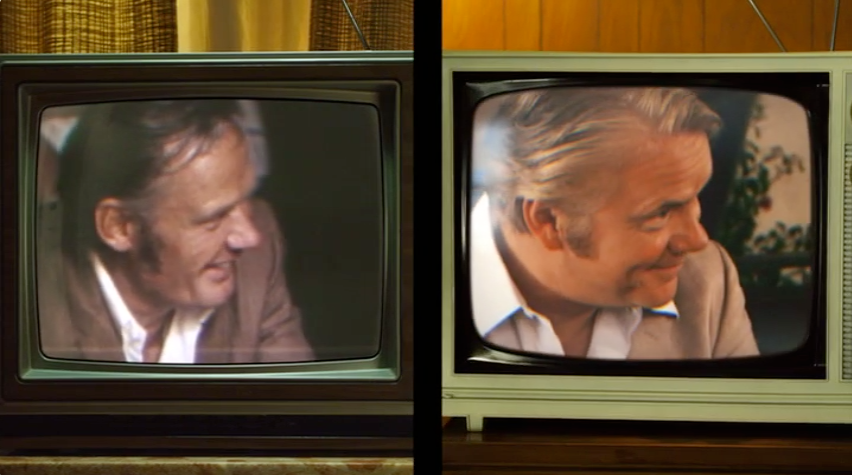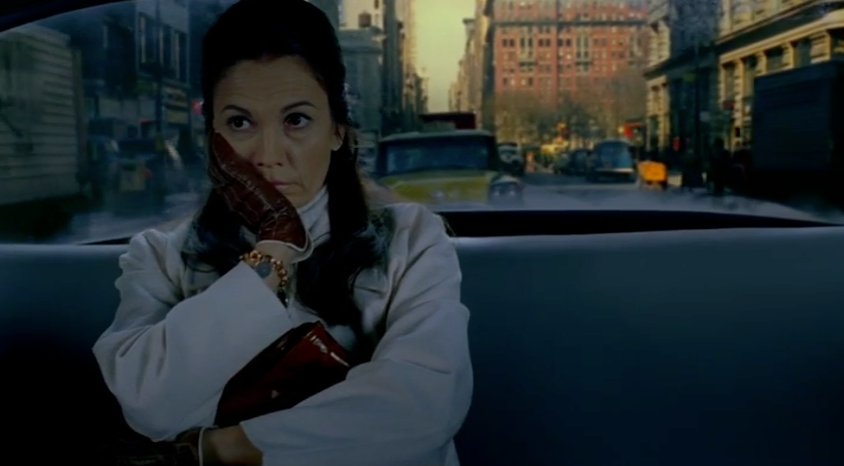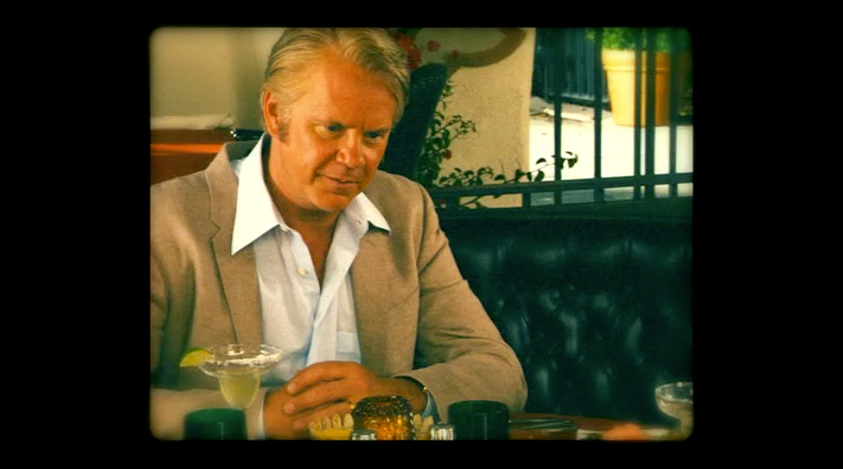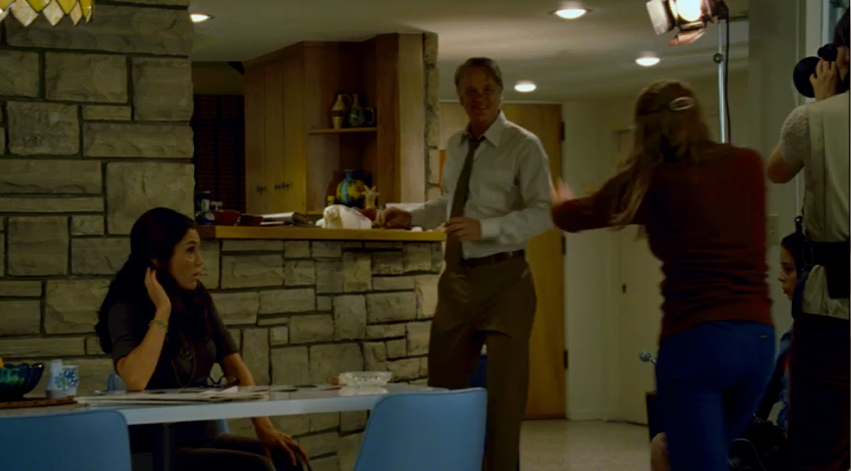BUY FROM AMAZON: CLICK HERE!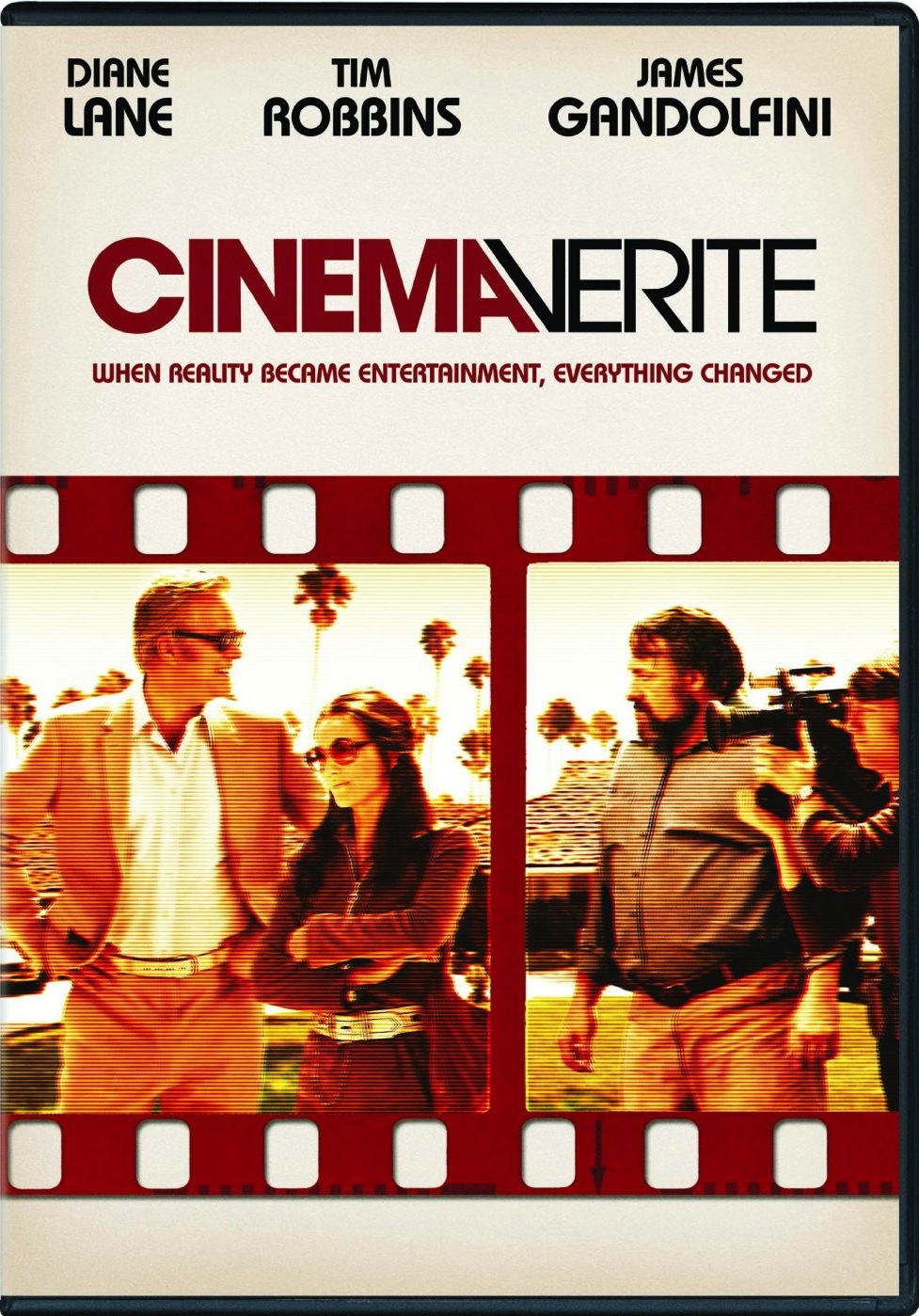 STUDIO: HBO Home Video
STUDIO: HBO Home Video
MSRP: $19.97
RATED: Not Rated
RUNNING TIME: 90 minutes
SPECIAL FEATURES:
- Commentary with directors Shari Springer Berman and Robert Pulcini and actress Diane Lane.
- The Making of Cinema Verite: A Look Behind the Scenes of Cinema Verite.
The Pitch
A dramatization of the real story behind the first reality show.
The Humans
Diane Lane, Tim Robbins, James Gandolfini, Patrick Fugit, Kathleen Quinlan, and Thomas Dekker.
The Nutshell
Berman and Pulcini make the artificial compelling.
The Lowdown
Cinema Verite is a film that draws lines between reality and artificiality. Its subject, the filming of the first reality TV series, An American Family, shows how people react to the camera, and the levels of truth in front of and behind it. The way the actors and directors negotiate time in front of fake cameras and real ones sets Cinema Verite apart, questioning the interpretations of what the viewer sees on screen.
Cinema Verite tells the story of the Loud family, whom, in 1973, were selected as reality television’s first family for a new series called An American Family. Skeptical, if not curious, the family ignores their own shortcomings and accepts. Producer Craig Gilbert (Gandolfini) assures their privacy, and his artistic integrity, by creating a relaxed atmosphere for the family, particularly mother, Pat Loud (Lane). Surrounded by cameras 24 hours a day, they must learn to control their emotions or reveal them to viewers tuning in.
Years of dealing with Kardashians has established a distinction between content and truth on reality TV. Much of the drama may have happened in the moment, but editors create the narrative. Cinema Verite loves this notion. Opening on a television playing clips of the real American Family series, before being moved out of the frame by Tim Robbins’ eerie Bill Loud simulacrum, the film reminds us of its own falseness almost immediately. The camera pans out on editors constructing the story, setting up a film that attempts to mimic moments from the show, but also explicitly separate the real from the fake.
This opening scene creates the illusion of the perfect family, they flip burgers, swim in their pool, and enjoy the California sun. The Louds are a real-life Brady Bunch, or “the west coast Kennedys,” as Bill puts it. Both Lane and Robbins play this up: She acts like the lonely housewife, curious about her husband’s business trips; he plays Jim Cleaver. They’re not themselves in front of each other, why should they be for America?
Berman and Pulcini structure the action chronologically. After Gilbert eases them into the production, the shoot starts with Pat’s New York trip to see her eldest son, Lance (Dekker). It’s here that the film show’s its own artifice, interests, and begins grabbing the viewer. The directors stage Pat’s arrival in front a rear projector, giving the film a false style. She’s not driving in a car, she’s acting in a movie, the directors remind us. This continues when she gets out and meets her film crew, Alan and Susan Raymond (Patrick Fugit and Shanna Collins), who tell Pat to ignore the cameras and act naturally.
Pat immediately feels blocked by the cameras, unable to escape the public’s now prying eyes. Things get more interesting when Lance introduces himself by basically coming out to all of America. When Pat goes with Lance to a local drag show, Pat quietly looks for an escape but not before one of the performers delivers the line, “one must never let the public see behind the scenes, for they are easily disillusioned, and then, they are angry with you, for it is the illusion they love.”
This all just a sign of things to come. Pat learns the problems with reality on day one, but her husband creates a whole new world of them. Bill’s a frequent business traveler, so Pat has long suspected his infidelities–though, he’s never too shy about his flirtations. He’s both cognizant of the camera, asking Alan Raymond to shoot his romantic gestures, and ignorant of it, flirting with his neighbors on camera.
These actors are acting for two cameras, which makes the film all the more impressive. When Tim Robbins acts as Bill Loud, he does so for the fake cameras held by Patrick Fugit’s, as well as Berman and Pulcini’s camera. It’s a fascinating technique: The performances give the film its heart and the directors give the film its art, which is exactly what Craig Gilbert attempted to create.
While the artifice feels tenuous in the film’s first act, with the script leading things in such an obvious direction, the story, performances, and direction overpowers it. Like a reality show, the drama is so well contained and structured that too look away is to miss the train-wreck. The production feels fake, but Pat and Bill’s failing marriage feels real, because it was real. The family’s issues could not be stripped in the editing room, showing that the longer one spends in front of the camera, the more they reveal of themselves.
The Package
There are two special features floating around this otherwise bare bone edition. The first, a look at the making of Cinema Verite is nothing more than a commercial, a preview for the film you probably just watched. But if you are that one person on Earth buying the disc for that feature, save your money.
The next is an uneventful commentary with the directors and Diane Lane. They talk about what editing processes were like in the 70s; the origins of Gandolfini’s many long-sleeve shirts; and getting to ride Universal’s King Kong ride one day before its public unveiling. As the commentary continues, they discuss the directors’ process, as well as the implications of editing and acting for camera in an age of reality take over. It’s an interesting commentary, but would probably make a more interesting, more focused interview.
What the package sorely misses is some actual episodes of the series. The film treats us to a bit of footage, but the convincing dramatization and comparisons make one pine for the original. A 14-hour box set, containing the film and the 12-part mini-series, is in order. C’mon, HBO!
Rating: Out of a Possible 5 Stars





